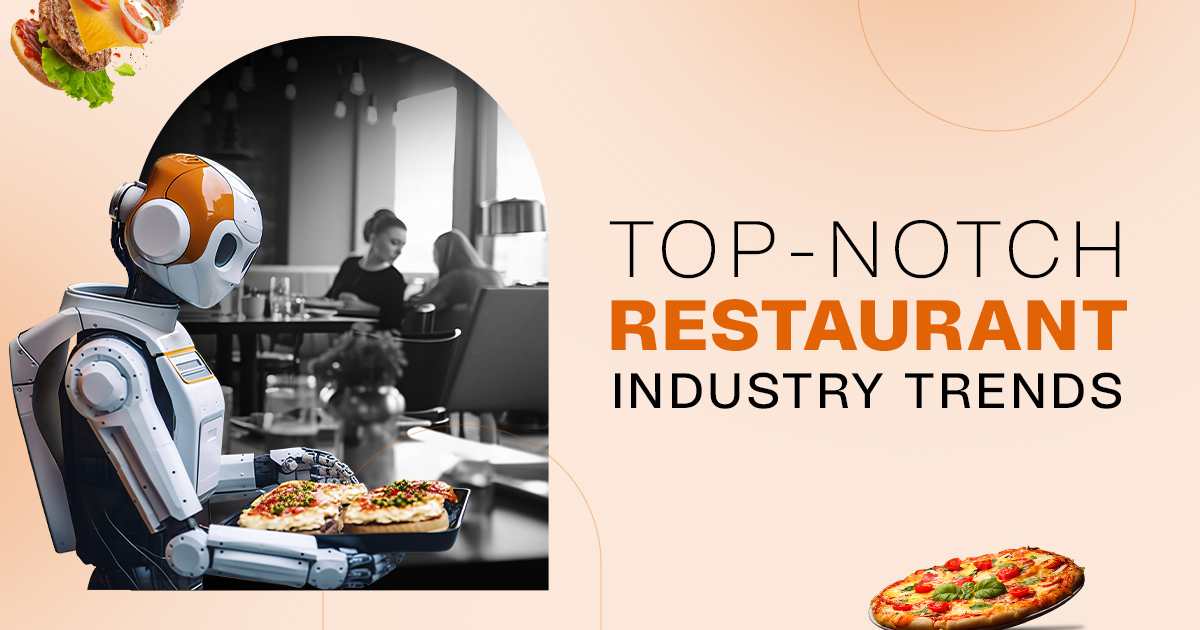1. AI-Powered Systems: From Smart Menus to Dynamic Pricing
Artificial intelligence is rapidly transforming both front- and back-of-house operations. Restaurants are now using AI-driven smart menus that recommend items most likely to resonate with diners based on sales data and customer profiles. Dynamic pricing tools adjust item prices on the fly considering demand, margin, or inventory levels Food & Wine. AI also automates reservations, handles calls, predicts demand to reduce waste, and even helps culinary innovation by suggesting new flavor combinations Food & Wine. Companies like Dine Brands are deploying AI-powered personalization engines—Applebee’s and IHOP are already using these to tailor deals and recommendations to guest behavior The Sun+6The Verge+6Deloitte+6. AI also empowers operational analytics to transform data into actionable marketing and efficiency improvements Supy+1.
2. Robotics & Full Automation
We’re witnessing a surge in robotic automation in kitchens and dining areas. Examples include Burgerbots in California, where dual ABB robots assemble burgers in just 27 seconds—boosting efficiency while human staff still handle service arXiv+10Wikipedia+10New York Post+10. Fast-casual restaurants are also seeing robotic innovations: Chipotle’s avocado-cutting “Autocado” and Makeline robots are becoming more common Wikipedia. “Flippy” robots from Miso Robotics—used by CaliBurger, White Castle, and Jack in the Box—continue to gain traction for fry and grill prep Wikipedia. Business Insider notes the rise of cashierless tech, robot servers, robot chefs, and 3D food printing in the “restaurant of the future,” with major chains like McDonald’s, Chipotle, and Presto advancing in this space Business Insider.
3. Self-Service, Contactless Ordering & Digital Displays
Contactless dining continues as a staple, with customers scanning QR codes to access menus, place orders, and pay—all minimizing contact and improving speed Indeed+15Wikipedia+15Tripleseat+15. Self-service kiosks and digital menu boards are widespread, especially in fast-casual contexts; they improve accuracy, speed up service, and allow dynamic content updates NetSuite+2Wikipedia+2. Digital outdoor menu boards—for drive-thrus—can even adapt displays based on time of day or weather, boosting order values by up to 30% and cutting wait times Wikipedia.
4. Ghost Kitchens & Virtual Dining
Delivery-only or “ghost” kitchens remain on the rise. These setups operate exclusively via online platforms—operating from shared or low-cost kitchen space, enabling rapid brand experimentation and lower overhead Wikipedia+1. The virtual model continues to expand, offering scalability and flexibility, though transparency and working conditions remain a concern Wikipedia.
5. Immersive & Experiential Dining
Restaurants are increasingly using immersive tech to elevate atmosphere and engagement. Ultraviolet, a multisensory restaurant, integrated projections, scents, lighting, and music to enhance each course—though it closed in March 2025 due to external factors Wikipedia. Meanwhile, AR and VR are being used to simulate dining environments, visualize dishes in 3D, host virtual cooking demonstrations, and even train staff in immersive simulations Menu Tiger+1. Augmented reality table setups and lighting customization have also proven to improve guest experience and reduce perceived wait times arXiv.
6. Smarter Inventory & Operational Systems
AI-powered inventory systems forecast demand, order supplies optimally, and reduce food waste by analyzing sales and shelf life Supy+10Grubhub+10Menu Tiger+10. POS systems now integrate AI, offering real-time analytics, alerting low stock, and streamlining operations—while enhancing service through tableside ordering and contactless payments Menu Tiger+7OpenTable+7Lavu –+7. Comprehensive platforms also include workforce management, predictive guest analytics, and deeper CRM insights Supy.
Summary: What’s Driving Change?
| Trend | Key Drivers |
|---|---|
| AI & Smart Analytics | Personalized service, waste reduction, loyalty growth |
| Robotics & Automation | Labor efficiency, consistency, speed |
| Self-Service & Contactless | Convenience, accuracy, operational throughput |
| Ghost Kitchens | Flexibility, cost savings, delivery optimization |
| Immersive Tech | Experience differentiation, training, engagement |
| Smarter Operations | Resource allocation, guest insights, profitability |


